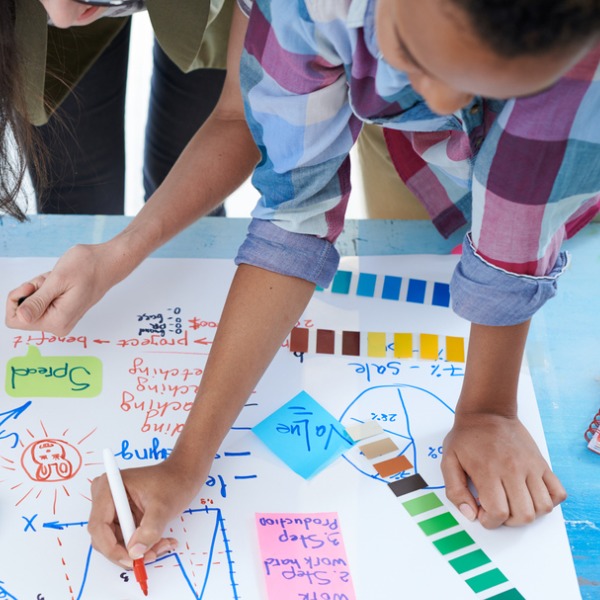Design Planning

Students design planning (SeventyFour, iStockphoto)

Students design planning (SeventyFour, iStockphoto)
How does this align with my curriculum?
A design plan lays out ways in which students will develop and test the agreed-upon solution to a Design & Build challenge.
Definition
A design plan lays out ways in which students will develop and test the agreed-upon solution to a Design & Build challenge. A good design plan includes a sequence of steps describing what is to be done to create the prototype, the materials, tools and equipment that will be required and one or more labelled sketches of the prototype.
Design Planning is important because it…
- requires students to think logically and sequentially when they delineate the steps involved in creating a prototype
- requires students to clarity exactly what is to be created and tested
- builds on student's helps students' prior knowledge of tools, equipment and materials
- fosters students’ ability to think ahead and be flexible
- fosters the development of students’ time and resource management skills
Teaching and Learning Design Planning
Students |
Educators |
|---|---|
|
Visualize what a solution to the problem might look like |
Provide guided practice for students to use their imagination to generate images in their minds for what the solution might look like, function like, be made of, etc. Visualization is a specific type of spatial thinking/reasoning. |
|
Use their visualizations as the basis for creating representations such as labelled sketches, dramatizations or storyboards of the potential Design & Build solution (e.g., “In our drawing you can see that each tablet will have a pocket where we can put our names if we want to use it that day. Maybe we can give each tablet a number?”) |
Model how to create a labelled sketch. Encourage students to add labels and measurements for the various parts of the design, and to include a listing of tools, equipment and materials. |
|
Develop an understanding of design sketches as a way of communicating with others |
Engage with students as they develop their design sketches, noticing and naming ways in which their sketches communicate important information to others (e.g., “From your design sketch I can see that you would like your boat to be 30 cm long. Will the paper that we have be long enough for that?” “I see that you plan to make your car out of wood. How will you attach the wheels to the block of wood?”). |
|
Identify the tasks or key steps involved in developing the solution to the Design & Build problem, including the sequence of the steps or tasks, as well as how they will record the tests of their prototypes |
Assist students with identifying a logical way of planning for the creation and testing of their design ideas (e.g., “When you build your boat, what will you need to do first?” “How will you cut the wood that you want to use to build your car?”). Planning tools can assist students with organizing their thinking. |
|
Notice and name materials that can be used in the Design & Build process |
For students to choose appropriately there must be an appropriate collection from which they can select. Ensure that the learning environment allows for adapting materials from one area of the classroom to another (e.g., “This box was in the pile to be recycled. We can use it as the base for our scissor organizer then we don’t have to build one. Now we just have to make the dividers.”) |
|
Purposefully and intentionally select the materials, tools and equipment that will be required to complete the creating and testing phase of the Design & Build process (e.g., hands-on materials, tools, test environment, etc.) |
Assist students when they identify materials and equipment, especially if the materials and equipment are new to them. Mini-lessons on tool use, or inquiries about the properties of materials or fasteners (such as the Inquiry Which Fastener is Best?), may be necessary before students can identify the tools and materials that are appropriate for the task (e.g., students could test newspaper and plastic to determine which is more waterproof). |
Related Skills